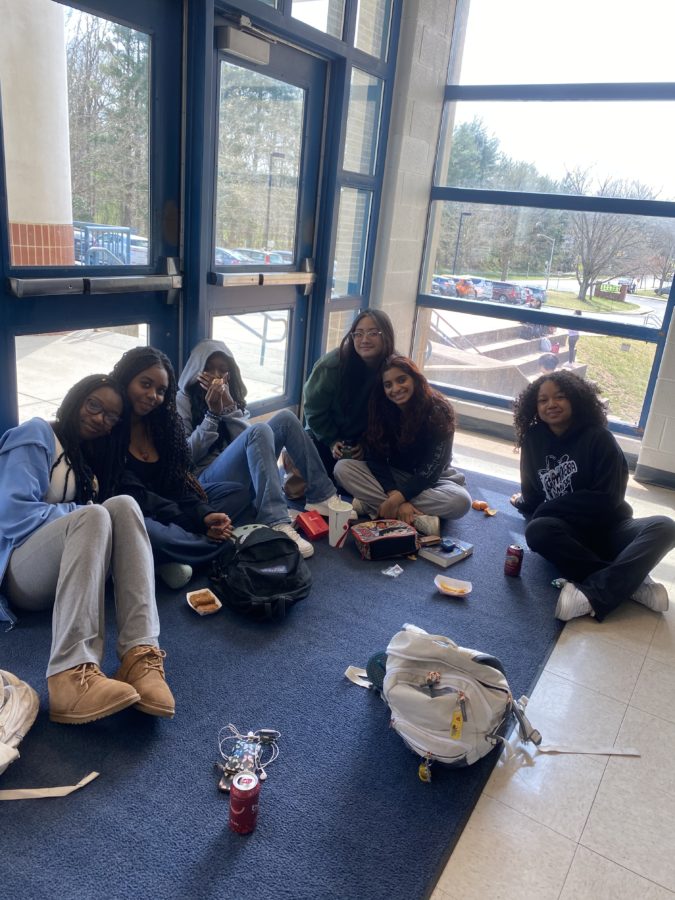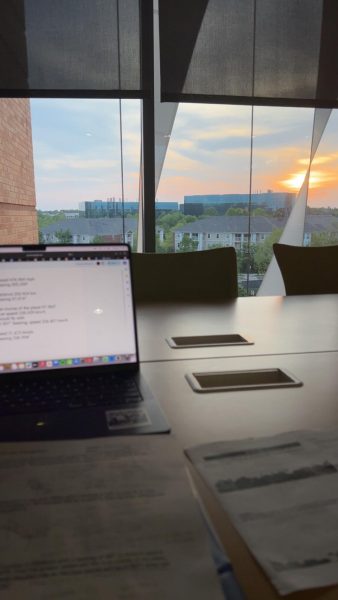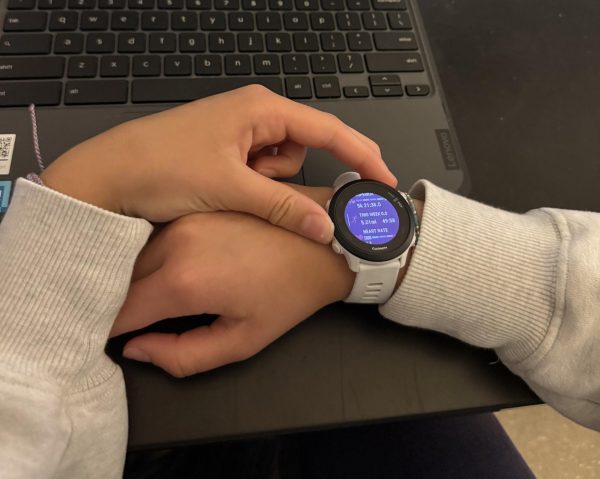Students want lunch-time rights
Sophomores Teemo Taiwo, Destinee Sousani, Brigette Gomez, Daniela Bunuan, Maddy Mathew, and Jade Claude sit in the front of the school building during lunchtime. “I love this time of the day because we get to all be together and just relax,” Sousani said.
The concept of an open school-lunch policy that allows students to leave school during their lunch periods has created controversy. The issue is the conflict between students’ wishes for increased independence versus parents’ and school administrators’ concerns about safety and negative academic results.
Students support the open lunch policy, saying that the freedom to leave school allows them to build independence and responsibility, skills and experiences. Freedom of choice on this issue is not just about individual student rights; this freedom is crucial for students’ transitions to real life, including post-high school jobs and college responsibilities. “I think an open lunch would help students transition from high school to college better because it gives us more freedom, and it is fun to get some grub from places with friends,” senior Kassandra Acuna said.
Additionally, students may feel that the ability to leave school grounds for lunch instead of eating in a crowded school cafeteria increases their safety from person-to-person illness in our post-pandemic world. Another positive factor for students would be their ability to choose healthier and more appetizing lunch options than may be available in the school cafeteria. Sophomore Cayla Shwartz said, “I feel like open lunch would be more convenient because there would be more food options available. As someone who’s vegetarian, I go days without eating lunch at school because the vegetarian options aren’t available sometimes.”
According to the Centers for Disease Control and Prevention, “taking a quality break during the day improves students’ memory, attention, and concentration. Junior Allison Goldring said “I think that an open lunch policy would benefit students because we would be able to leave the building, which gives us time to relieve stress, which would result in us coming back stronger and more focused after lunch.”
However, administrative and parental concerns remain strong. These involve fears that teen lunch-time driving creates an unnecessary risk of car accidents and that — in order to “find” the additional time needed for open lunch — administrators must take precious minutes from other areas of the school day. The time component is crucial because each student would have to take a significant amount of time to leave campus, return, and re-park on-time for their next class. Tardy students suffer a negative educational impact and their classmates do as well. Additionally, teenagers’ lack of driving experience combined with the temptation to speed in order to get back to campus promptly creates a dangerous atmosphere that could result in injuries or fatalities.
And, of course, there are concerns that students will not eat as healthily as they would with a balanced meal in the school cafeteria.
Ultimately, all members of the school community —- students, parents, and administrators — must decide whether or not the advantages of open lunch outweigh the disadvantages. The decision is a delicate balance between student freedoms, student safety, and academic priorities.
Your donation will support the student journalists of Thomas S. Wootton High School. Your contribution will allow us to purchase equipment and cover our annual website hosting costs.
Sydney Chaikin is a 2025 graduate.







